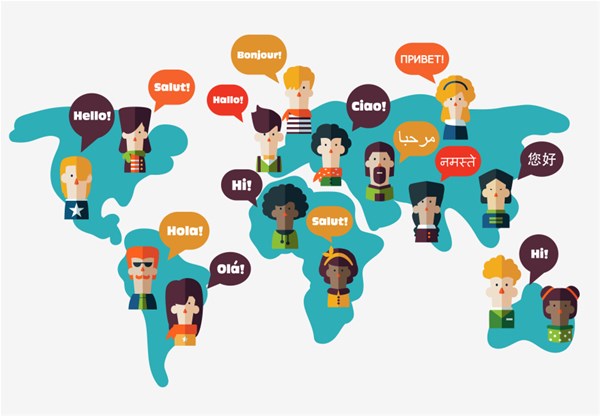What Is Cross-cultural Communication and Why It Matters
Even in situations when there is no language barrier, communication can be challenging. For instance, multicultural workforces in multinational corporations frequently find it difficult to confront cultural presumptions in face-to-face or on employee communications channels. Therefore, simply making your point clearly is insufficient. A thorough understanding of cross-cultural communication is necessary for productive teamwork and profitable commercial ventures.
You probably need to grasp what culture is in order to completely comprehend intercultural or cross-cultural communication. Communication theory defines culture as the rules and social behavior found in all cultures, including language and communication systems, values, and beliefs.
As you can see, the term is rather simple, but it’s more complicated to understand how to apply cross-cultural communication in the workplace. Before delving into the specifics of cross-cultural communication, it is crucial to remember that there are cultural generalizations that do not take particular members of a culture into consideration. For instance, hand gestures are interpreted differently in every country in the world. Conflicts between cultures are inevitable since cross-cultural communication is the means by which individuals from various cultures interact with one another. Giving diversity a priority in the employment process is one way to minimize these conflicts. When individuals from different cultural backgrounds collaborate to achieve a shared objective, there is less chance of hurtful miscommunications and higher-quality work produced.
Importance of cross-cultural communication
To foster a healthy work culture, companies with multicultural cultures need to prioritize the development of cross-cultural communication skills. Careful cross-cultural communication can help you avoid misunderstandings and build enduring bonds with individuals from different backgrounds. The unfettered flow of information between stakeholders is made possible by this courteous intercultural conversation. Effective cross-cultural communication may also help businesses find new markets and expand. Employees from various age groups and cultural backgrounds, for instance, might provide insightful information on the habits, preferences, and purchasing behaviors of their respective generations. Their comprehension of the target market might support your company’s expansion into new areas. Accepting cultural differences also lowers turnover and increases employee engagement among international staff.
Cross-cultural communication examples
Cross-cultural situations can take different shapes. Effective communication strategies often address the barriers created by factors like:
- Language: Individuals might speak regional varieties of one language or whole separate languages. For instance, there are significant differences between American and British English in terms of vocabulary, pronunciation, and phrasal verb use.
- Cultural norms: Every culture has its own set of behavioral guidelines, in addition to linguistic variations. For instance, in Germany, you would shake hands firmly rather than bow like you would in Japan.
- Age: Depending on their experiences and worldviews, team members from various generations may hold varying opinions.
- Education: Individuals from various nations may hold stereotypes regarding varying degrees of education.
- Business communication style: When it comes to speaking in a professional setting, business leaders from various cultural backgrounds may have distinct preferences.
Tips for effective cross-cultural communication
- Consider your own cultural background: Thinking about your own culture is the first—and most frequently overlooked—step towards developing cultural awareness. You have to know yourself before you can learn about others. Conduct a self-assessment and think about the culture you identify with, the parts of that culture that apply to you, and the communication style that your culture has given you. Taking stock of your own culture will enable you to accept cultural diversity with grace. It might be simple to forget that your actions and behaviors are not the standard for everyone when you are among like-minded others. You will thus become more culturally conscious if you take a critical look at yourself.
- Studies pertaining to cultural diversity: Now that you’ve given it some thought, it’s time to learn everything you can about foreign cultures. It will take a long time for this to happen. Prioritize first the cultures you engage with or try to market to.
- Pose inquiries: Individuals are special. It is possible for someone to be from a given culture and not share any of its values or characteristics. There is a distinction in modern culture between cultural awareness and stereotype or cultural assimilation. Thus, rather of making assumptions about facts, get several perspectives from members of that specific culture. Thus, exercise curiosity and pose pertinent queries. It will be simpler to pose these questions if you have done some introspection and study civilizations other than your own.
- Prevent being misinterpretedBy concentrating on cross-cultural communications, you may assist your staff become more adept at working together and grow your company to new heights. Make sure that nothing in your messages is misinterpreted.

